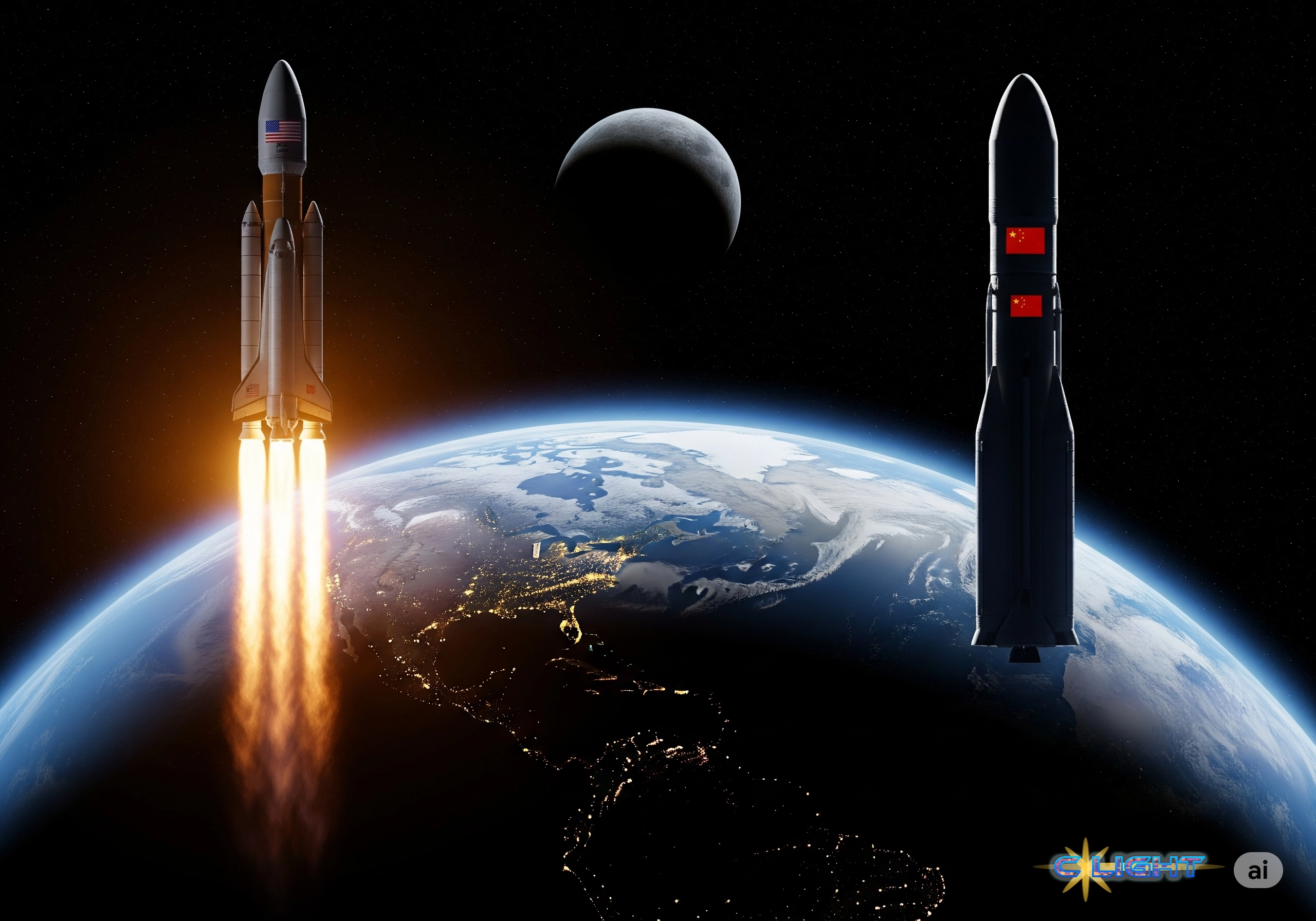In a move that felt both futuristic and deeply panicked, the Trump administration announced this week that it is expediting plans to put a nuclear reactor on the Moon by 2030. The directive, issued by interim NASA administrator and current Transportation Secretary Sean Duffy, was framed as a bold leap for American leadership in space. But a closer look at the context reveals a different story. This is not a visionary, science-driven initiative; it is a chaotic, politically charged reaction to a new and formidable “space race” against a methodical China-Russia alliance, a race in which the United States suddenly feels it is dangerously behind.
Part I: The American Sprint – Spectacle Over Science
The American approach to this new race is a case study in political performance. The primary motivation, according to documents obtained by POLITICO, is a raw, geopolitical fear that a rival power could establish a lunar reactor first and “declare a keep-out zone,” effectively locking the U.S. out of strategic locations on the Moon. This fear is driving a public relations blitz, with Duffy appearing on Fox News to promise a Moon landing “under [Felonious Punk’s] tenure.”
However, as Russian state media was quick to point out, this “accelerated” timeline is little more than a cynical rebranding of the existing, long-delayed Artemis program schedule. Duffy is not announcing a new capability, but is simply putting a MAGA sticker on NASA’s existing, pre-Trump plans. This political spectacle is made all the more galling by the administration’s own budget. The White House is pushing for this high-profile, high-cost nuclear project while simultaneously proposing a nearly 50 percent cut to NASA’s core science missions. It is a clear and damning prioritization of spectacle over science, of planting a flag over the hard work of actual research.
Part II: The Alliance’s Marathon – A Resource-Focused Plan
In stark contrast to the chaotic American sprint stands the methodical, long-term marathon being run by the China-Russia alliance. Their joint project, the International Lunar Research Station (ILRS), is a well-defined, multi-stage plan with a clear division of labor: China’s rapidly advancing space program and manufacturing prowess paired with Russia’s world-leading expertise in space-based nuclear reactors.
Their timeline is steady and deliberate: a preparatory mission in 2028, a permanently staffed base by 2030, and a fully functional ILRS by 2035. Crucially, their approach includes a “soft power” component that is entirely absent from the American effort. China’s “555 Project” is an open invitation to 50 countries and hundreds of scientific institutions to participate in their lunar station. This frames their effort not as a nationalistic conquest, but as a collaborative, international scientific endeavor, an appealing alternative to the U.S.’s go-it-alone rhetoric.
Part III: The Third Way – The Anglo-American Engineers
But the race is not a simple bipolar conflict. A third, arguably more pragmatic, player has entered the field: a US-UK private-sector alliance. As reported by Bloomberg, the British aerospace giant Rolls-Royce is actively developing its own micro-nuclear reactor for the moon, funded in part by the UK Space Agency. The company is not engaging in political theater; it is focused on the hard engineering, working to ensure its reactor fits NASA’s “challenging” mass requirements for launch.
This effort is underpinned by the “Atlantic Declaration,” a formal 2023 agreement between the U.S. and the UK to cooperate on space nuclear power. This represents a “third way” of approaching the problem—one driven not by chaotic political directives or state-run autocracy, but by the practical, collaborative efforts of established aerospace companies and their engineers, working within a framework of long-standing international alliances. While the politicians posture, the engineers are quietly trying to build the hardware.
Part IV: The Ultimate Prize – Why They’re Racing
The reason for this sudden, multi-front race to the Moon is not just about national pride or scientific discovery. It is about the control of immense natural resources and the future of energy on Earth. The lunar surface is rich in valuable metal oxides, silicon, and rare-earth metals.

But the ultimate prize, as one Chinese scientist noted, is helium-3. This rare isotope, which is abundant on the Moon and virtually nonexistent on Earth, is a potential fuel for clean, safe nuclear fusion. It is a theoretical game-changer that could, in his words, “solve humanity’s energy demand for around 10,000 years.” The nation that first develops the technology to mine and transport helium-3 would not just win a space race; it would effectively control the energy future of our planet.
A Clash of Philosophies
The new race for a nuclear reactor on the Moon is a profound clash of civilizations and philosophies. The U.S. administration is engaged in a loud, chaotic, and politically performative sprint, prioritizing spectacle over science. The China-Russia alliance is running a steady, methodical, and state-run marathon focused on resource control and building a global coalition. And quietly in the background, the pragmatic engineers of the Anglo-American private sector are focused on simply building a machine that works. The ultimate question is which of these models—chaotic individualism, state-run collectivism, or private-sector collaboration—will be the one to win the ultimate prize and shape the future of humanity, both on and off this world.
Discover more from Clight Morning Analysis
Subscribe to get the latest posts sent to your email.










